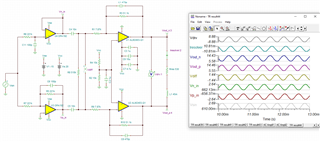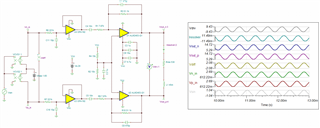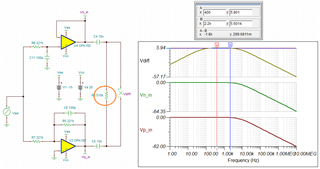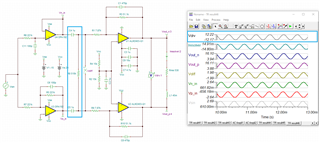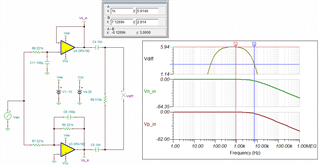Hi,
We are having trouble performing PSPICE simulations with the ALM2403-Q1 model.
We had a simulation that was running fine with the ALM2402 and switched to the ALM2403 with few adaptations.
Our current schematic is the following:
With the ALM2402, the differences were its power supply which was 15V and the RL10 resistance which was 10k.
When we run the simulation with the new design, we are having the following errors:
ERROR(ORPSIM-15138): Convergence problem in Transient Analysis at Time = 169.3E-06.
These voltages failed to converge:
V(N52391) = -20.68uV \ -116.98uV
V(X_U3.N39892) = 519.82uV \ 538.42uV
V(X_U3.N46041) = 34.66V \ 35.89V
V(X_U3.N161737) = 20.70mV \ 24.51mV
V(X_U4.N39892) = -598.85uV \ -609.97uV
ERROR(ORPSIM-15661): 5 of 5 errors shown. See output file for complete list
These supply currents failed to converge:
I(X_U3.E_E1) = -5.880mA \ -1.089mA
I(X_U3.E_E3) = 650.63nA \ 126.55nA
I(X_U4.E_E1) = 7.106mA \ -1.735mA
I(X_U4.E_E3) = -782.23nA \ 180.79nA
I(X_U5.E_E1) = -2.060mA \ -2.065mA
ERROR(ORPSIM-15661): 5 of 7 errors shown. See output file for complete list
Do you see anything wrong or is there any issue with the model available from your website ?
Best regards,
Clément


